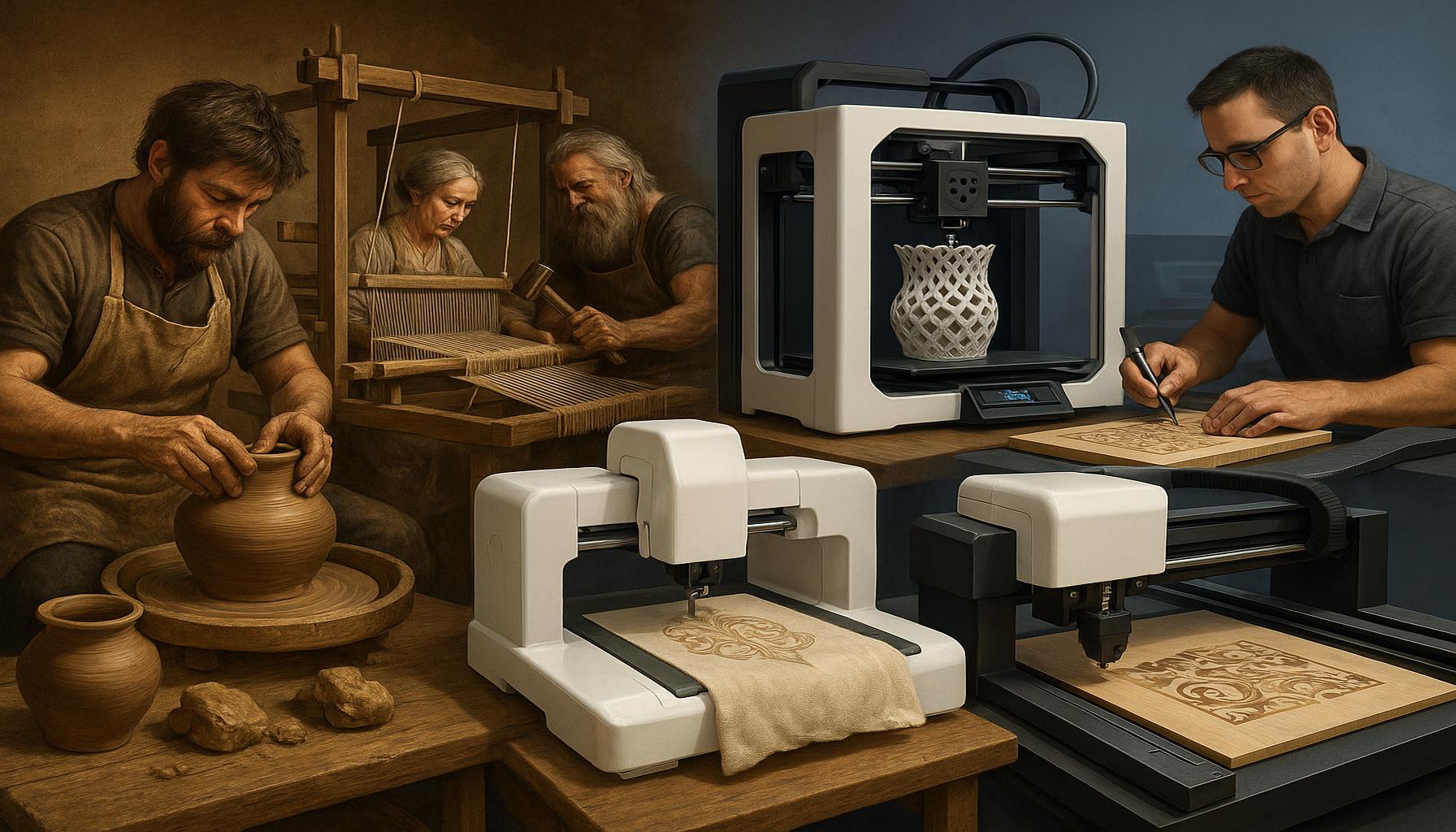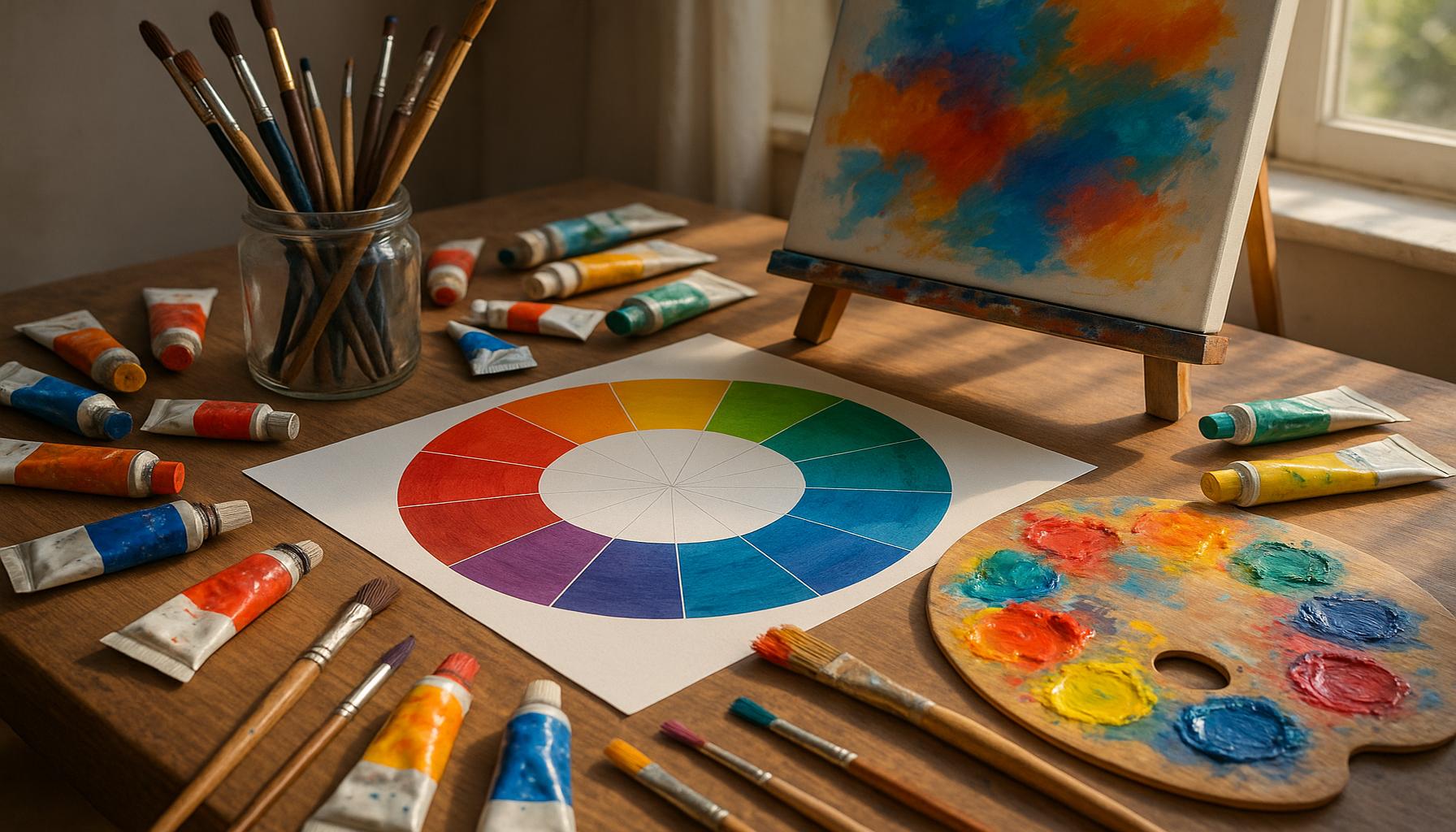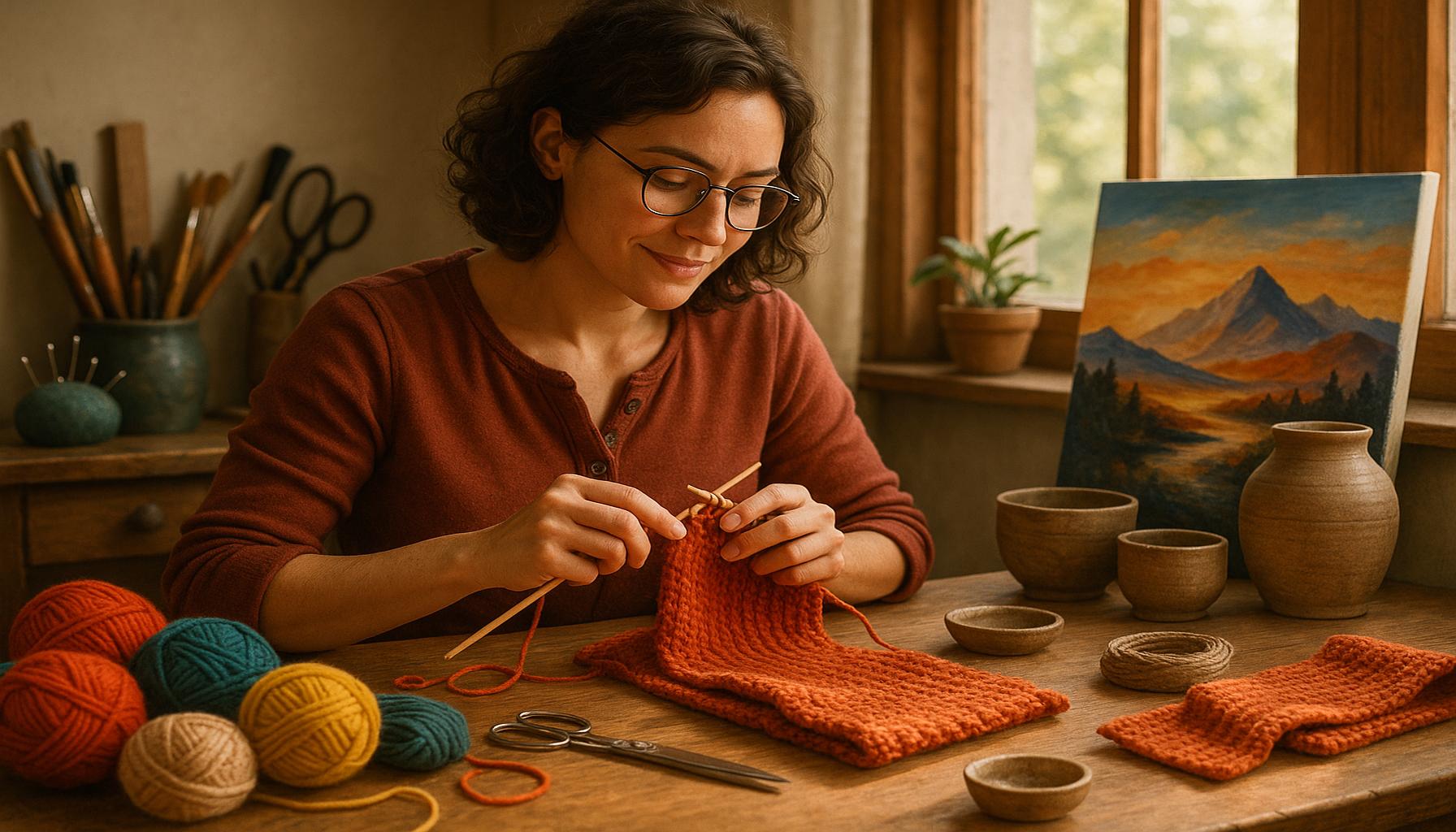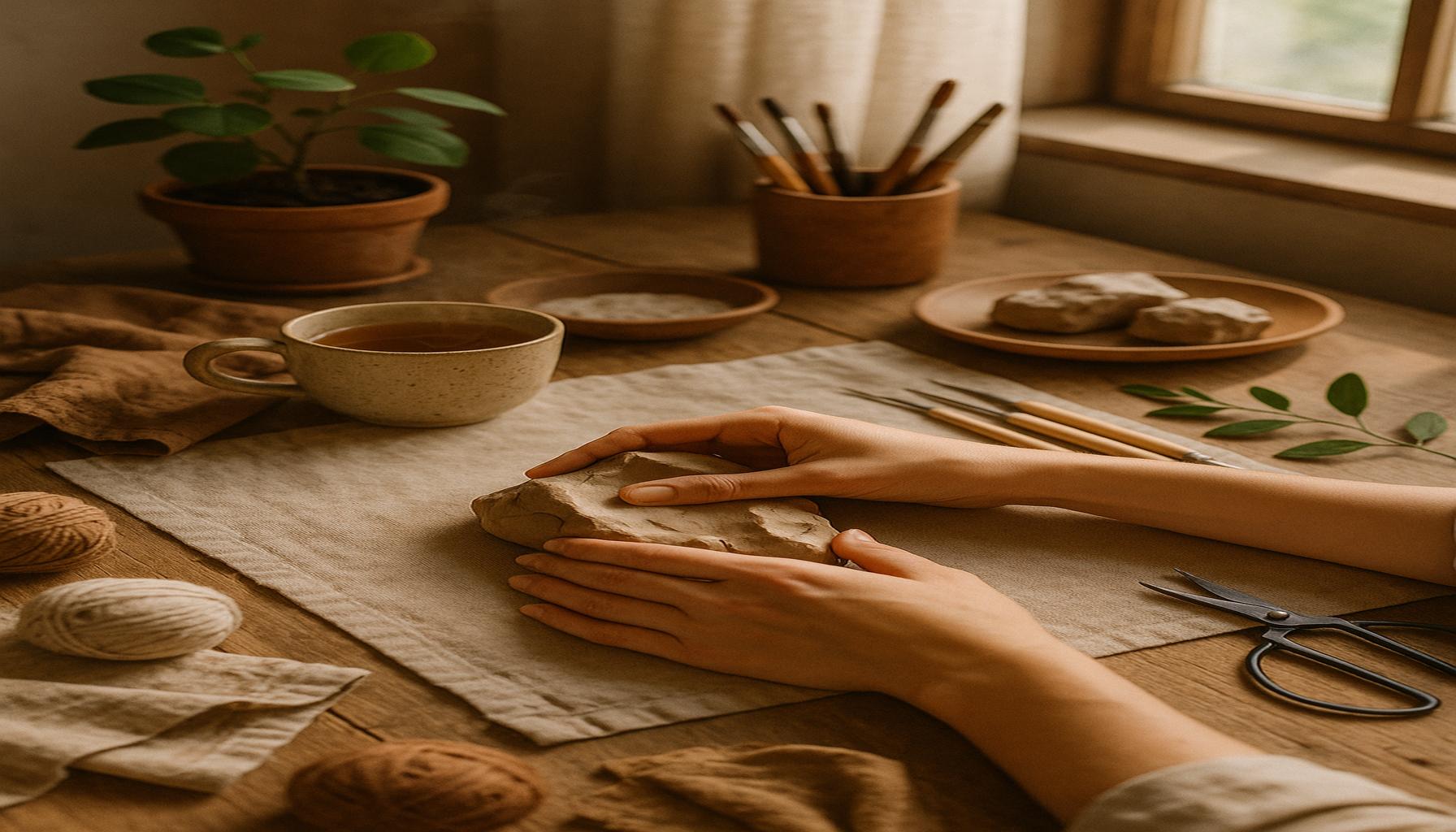The Evolution of Crafting Trends: From Traditional Techniques to Modern Innovations

Crafting: A Journey Through Time and Trends
Throughout history, crafting has provided individuals with a profound way to express creativity and manifest unique ideas. This art form is inherently versatile, evolving with the times and influenced by various factors including cultural shifts, technological advancements, and personal expression. By delving into the evolution of crafting trends, we can better appreciate the handmade items that grace our lives today.
Traditional Techniques
Crafting’s strong foundational roots lie in traditional methodologies that have been passed down through generations. Techniques such as:
- Weaving: Practiced for thousands of years, weaving transforms threads into intricate fabrics, often resulting in stunning garments and textiles that tell cultural stories.
- Pottery: This ancient craft involves shaping clay to create both functional dinnerware and decorative art pieces, each reflecting the style and techniques of its era.
- Woodworking: Carving wood into furniture or decorative items showcases not only skill but also a deep appreciation for natural materials.
- Embroidery: This craft embellishes fabric with decorative needlework, often used to convey cultural symbols or personal sentiments.
These traditional methods are still celebrated for their craftsmanship and the stories they embody. For example, indigenous weaving techniques are not merely functional but serve as a narrative medium reflecting identity and heritage.
Modern Innovations
As we transitioned into the modern age, technological advancements dramatically reshaped the crafting landscape. Innovations such as:
- 3D printing: This cutting-edge technology allows artisans to create intricate designs with precision, leading to the birth of new art forms and products impossible to produce by hand.
- Digital design tools: Craftspeople now utilize software to conceptualize and design their creations, enabling endless modifications and creativity without limitation.
- Sustainable materials: An increased focus on environmental responsibility has spurred the use of recycled and eco-friendly materials in crafting, attracting a conscientious consumer base.
- Online crafting communities: Platforms such as Etsy and Pinterest have revolutionized the way crafters connect, market their creations, and share inspiration, fostering a thriving DIY culture.
This merging of the traditional with the innovative not only broadens creative possibilities but also enhances accessibility for budding artisans across the globe.
The Influence of Globalization and DIY Culture
One of the most significant shifts in crafting culture is the impact of globalization. Artisans around the world now share techniques, styles, and products like never before. This cross-pollination of ideas has spurred the emergence of new aesthetic trends that blend diverse cultural elements. From artisanal shops downtown to bustling digital marketplaces, crafting is continuously adapted and reshaped to meet evolving tastes and trends.
The rise of the DIY movement has also redefined crafting. Individuals are increasingly taking it upon themselves to create, repair, or revamp items rather than relying on mass-produced goods. This shift towards personal involvement fosters creativity while promoting a stronger connection to the objects we create and consume. The return to handmade treasures serves as a reminder of the charm and individuality that accompanies handcrafted items.
As crafting continues to evolve, its ability to merge tradition with innovation will undoubtedly shape the future of handmade art. By exploring these trends, we strengthen our appreciation for the artistry and stories behind each crafted piece.
DISCOVER MORE: Click here to learn about the benefits of crafting for mental health</p
Traditional Craftsmanship: The Cornerstone of Creativity
The legacy of crafting is steeped in rich traditional techniques that serve as the foundation for modern practices today. As we embark on this exploration of crafting trends, it’s crucial to recognize the skills that have been revered and honed over centuries. Each craft tradition not only showcases the artistic ability of artists but also reflects the cultural significance and history of their respective societies. In many cases, these techniques have maintained their relevance through the ages, evolving subtly while retaining their essence. In the heart of every handwoven basket or intricately carved wooden figure lies a story waiting to be told.
Some of the most compelling traditional crafting techniques include:
- Pottery: One of the earliest forms of human creativity, pottery incorporates hand-building and wheel-throwing techniques, allowing artisans to create both beautiful and functional pieces. The materials used and the firing processes reflect the surroundings, giving each artifact a unique character that speaks of its origins.
- Blacksmithing: This enduring craft melds creativity with utility, involving the heating and shaping of metals to produce tools, artwork, and ornamental pieces. Blacksmiths are craftsmen who possess not only the skill to manipulate materials but also an understanding of historical techniques that have supported communities throughout time.
- Handloom Weaving: This technique exemplifies the marriage of artistry and tradition, as weavers produce textiles that carry both functionality and aesthetic appeal. From intricate tapestries to cozy scarves, the designs often embody cultural motifs that honor heritage and storytelling.
- Leatherworking: Dating back thousands of years, this craft encompasses the tanning, dyeing, and stitching of animal hides to create products ranging from clothing to accessories. Leather artisans take pride in their ability to transform raw materials into timeless pieces that age beautifully.
What binds these traditional methods is their inherent sustainability, as they often utilize locally sourced materials and manual techniques that minimize waste. This approach mirrors today’s growing desire for eco-conscious living and serves as a compelling reminder of crafting’s humble beginnings.
The Transition to Modern Crafting Trends
As we move forward into the 21st century, the landscape of crafting is undergoing a dynamic transformation, driven largely by technological advancements and shifting consumer preferences. The rise of DIY culture and the accessibility of tools and materials have empowered individuals to embrace crafting as both a hobby and a form of self-expression. With every innovation, we witness a blending of traditional techniques with modern inspirations.
Emerging trends such as:
- Digital Fabrication: Methods like 3D printing have gained traction, allowing for the creation of complex designs that would be challenging to produce using conventional techniques. This innovation opens doors to new possibilities, enabling artisans to experiment with form and function like never before.
- Online Workshops: Platforms offering virtual classes have proliferated, making it easier for people from all walks of life to learn skills from experienced artisans. This global exchange of knowledge enhances the crafting community’s diversity and fosters a spirit of collaboration.
- Upcycling: This modern trend emphasizes transforming discarded items into new creations, effectively marrying creativity with sustainability. Upcycling not only reduces waste but also inspires crafters to think inventively about materials and designs.
By examining these shifts in crafting trends, we can appreciate how traditional skills are not merely relics of the past but rather foundational elements that invigorate modern innovations. As we continue this journey through crafting, it becomes evident that the past and present are intertwined, shaping the future of creativity in extraordinary ways.
The Evolution of Crafting Trends: From Traditional Techniques to Modern Innovations
The journey of crafting can be traced back to ancient civilizations, where artisans poured their creativity into handmade goods. As artistic expressions progressed, certain traditional methods such as weaving, pottery, and woodworking laid the foundation for the diverse crafting techniques we see today. These techniques were often supported by a community culture, passing down knowledge and skills from generation to generation.
In recent years, we have witnessed a remarkable shift in crafting trends. Modern innovations, primarily fueled by technological advancements, have introduced new mediums and tools that revolutionize how individuals approach their creative practices. The rise of digital fabrication, for example, allows crafters to utilize 3D printing and laser cutting, enabling intricate designs that were once unfathomable using traditional methods.
This technological blend has also paved the way for an unprecedented sharing of ideas within the crafting community. Platforms like Instagram and Pinterest serve as both inspiration and marketplace, showcasing diverse techniques, styles, and personalization that cater to individual tastes. Crafters can now connect globally, bridging the gap between traditional art forms and modern trends, thus enhancing their skills and broadening their creative horizons.
Furthermore, the sustainability movement is forging its path within the crafting community, prompting artisans to reconsider sourcing materials and their environmental impact. Innovative approaches to reuse and recycle materials are becoming increasingly popular, fostering a newfound respect for the planet while celebrating creativity and craftsmanship.
As we delve deeper into the evolution of crafting trends, it becomes evident that this exploration offers both challenges and opportunities for creatives. The blend of traditional and modern means not only preserves legacies but also invites new perspectives on what crafting can be in our rapidly changing world.
| Crafting Origins | Modern Innovations |
|---|---|
| Traditional Techniques | Handwoven textiles, pottery, woodworking |
| Cultural Heritage | Preserves history and informs modern methods |
This fascinating evolution illustrates how crafting is no longer just a pastime but a living, flourishing expression of art and sustainability. Exploring both sides of this vibrant community can inspire a deeper understanding of how artisans navigate blending the old and the new.
DISCOVER: Click here to dive deeper
Innovative Influences: The Modern Crafting Revolution
The modern crafting landscape is a vibrant tapestry woven from the strands of innovation and cultural exchange. As we delve deeper into the evolution of crafting trends, we must recognize the significant impact of social media and online communities in shaping contemporary art forms. Platforms such as Instagram, Pinterest, and TikTok have become virtual galleries for creative expression, where artists can share their work, tutorials, and inspiration. This online visibility not only motivates individual crafters but also facilitates a global dialogue that extends beyond geographical boundaries.
One of the most prominent modern crafting trends is the emergence of cottagecore aesthetics. This trend glorifies a simple, nature-oriented lifestyle, encouraging crafting that leans towards sustainability and nostalgia. The aesthetics are characterized by handmade clothing, pottery, and natural dyeing techniques. As people seek ways to reconnect with their roots and escape the hustle of urban life, the cottagecore movement has brought traditional crafts back into the modern light, inspiring a new generation to pick up their needles, spindles, and sewing machines.
Another fascinating development can be seen in the realm of mixed-media art, where traditional crafting methods converge with modern-day elements such as photography, digital design, or even performance art. This blending of disciplines offers crafters an unprecedented canvas for expression—fostering individuality and pushing the boundaries of creativity. Modern artists are now able to incorporate technology into their work, leading to innovations in mediums and techniques that challenge conventional artistry.
Sophisticated tools, such as laser cutters and CNC machines, are revolutionizing the way craftspeople approach their work. These technologies allow for precision in design and execution, resulting in intricate patterns and forms that were once considered labor-intensive or impossible to achieve by hand. The accessibility of software programs such as Adobe Illustrator has also empowered artists by expanding their design capabilities, allowing for seamless integration of digital and physical crafting.
Moreover, the rise of subscription boxes has gained traction among crafting enthusiasts in the United States. Services that deliver curated crafting supplies and project ideas to subscribers’ doorsteps help foster a sense of community and engagement around crafting. These boxes often include materials sourced from local artisans, supporting small businesses while providing crafters with a diverse range of projects to explore. Such initiatives embody the spirit of collaborative creativity, encouraging individuals to share their completed projects online, further amplifying the crafting renaissance.
As crafting continues to evolve, we recognize the importance of inclusivity in the community. Emerging voices from diverse backgrounds are reshaping crafting narratives and redefining what it means to be a craftsperson today. The influx of marginalized artists into the mainstream crafting conversation is enriching the landscape with unique perspectives and styles, fostering an atmosphere of acceptance and collaboration.
In this ever-changing ecosystem of crafting, one constant remains—the value of handmade artistry. Even as technological advancements redefine contemporary practices, the essence of crafters’ unique skills and creativity endures, appealing to those seeking authenticity in a world increasingly dominated by mass production.
DISCOVER: Click here to learn how music can elevate your mental well-being
Conclusion: Crafting Between Tradition and Tomorrow
As we witness the evolution of crafting trends, it is evident that the journey from traditional techniques to modern innovations is both a reflection of our cultural heritage and a testament to our creative adaptability. The resurgence of interest in handmade artistry is fueled by a myriad of influences, from social media platforms that share crafting experiences to movements like cottagecore that celebrate sustainability and nostalgia. This vibrant crafting landscape invites individuals to express themselves while reconnecting with the roots of artisanal work.
Innovations such as laser cutting technologies and mixed-media art are redefining the possibilities of creation, merging traditional skills with modern techniques to yield captivating results. Crafters today have access to an array of tools and resources that empower them to break boundaries, fostering a new era of artistic exploration. Subscription boxes serve not only as a means of convenience but as connectors within the crafting community, supporting local artisans and cultivating an environment of collaborative creativity.
Moreover, the embrace of diverse voices enhances the narrative of crafting in contemporary society, showcasing how inclusivity can enrich creativity and inspire future generations. As these trends continue to unfold, the heartbeat of crafting remains vivid—the quest for authenticity amidst a world of mass production. Now more than ever, the craftsperson’s spirit of ingenuity and personal touch is celebrated, highlighting the importance of handmade artistry in our daily lives.
In conclusion, the evolution of crafting trends serves as a reminder that the artistry birthed from our hands is an essential bridge connecting the past, present, and future. Whether through tradition, innovation, or the unification of both, crafting will continue to be a vital avenue for personal expression and cultural dialogue, resonating with creators and enthusiasts alike. Embrace these shifts in crafting trends, as they pave the way for a richer, more inclusive tapestry of creativity.


